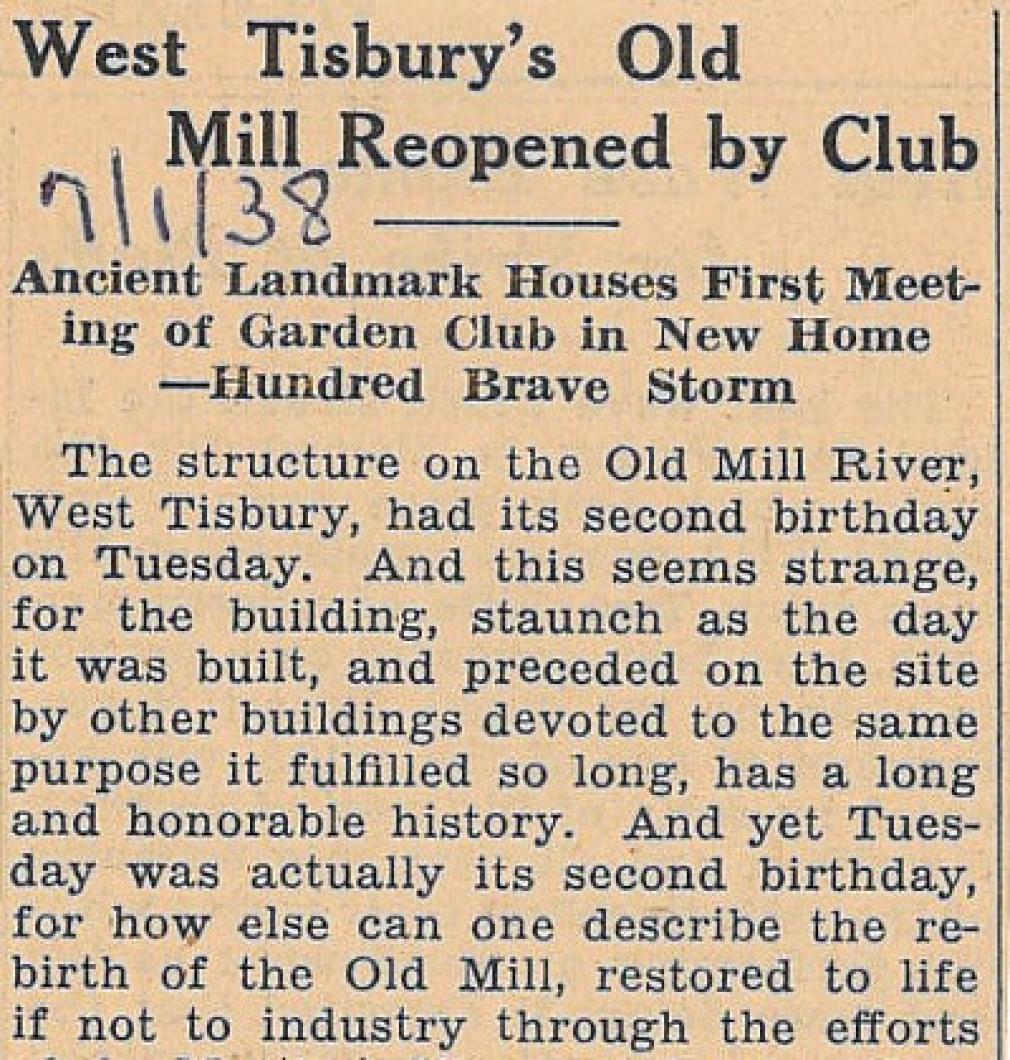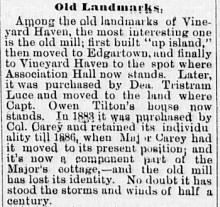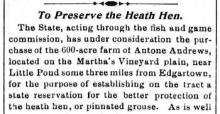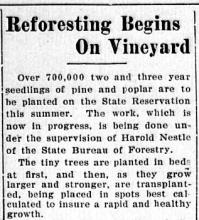The structure on the Old Mill River, West Tisbury, had its second birthday on Tuesday. And this seems strange, for the building, staunch as the day it was built, and preceded on the site by other buildings devoted to the same purpose it fulfilled so long, has a long and honorable history. And yet Tuesday was actually its second birthday, for how else can one describe the rebirth of the Old Mill, restored to life if not to industry through the efforts of the Martha’s Vineyard Garden Club, which in saving the ancient landmark from impending ruin, also provided itself with a home of its own.
The day chosen for the opening meeting of the year could scarcely have been less auspicious, and yet the discomforts of the trip through sheets of rain and in an unseemly low temperature for June did not deter more than a hundred of the stouthearted, who gathered at the Garden Club center. And there was a certain wild beauty to the scene viewed from the Old Mill not vouchsafed to those who visit it on more benignant days. Outside the windows swirled green leaves driven by the wind, dripping moisture against the windows. The Old Mill River and its tributaries were swollen beyond their usual diminutive strength, and their waters swirled by, too, but safely past the mill, which remained bone dry in one of its most crucial tests. And across the road lay the mill pond, grey water contrasting only in intensity of hue with gray sky, its surface ruffled and disturbed by wind and rain, but still as beautiful as on a perfect summer day.
A Note of Jubilance
There was a note of jubilance in evidence as the group of women settled down to the brief business of the day. Mrs. T. M. R. Meikleham, club president, reviewed the history of the restoration, presenting the financial report as well as the more exciting features of the work. She paid tribute to Mrs. Henry V. Greenough, chairman of the committee, who turned the tables by requesting a standing vote of appreciation of Mrs. Meikleham’s vision and accomplishment.
Mrs. Meikleham, wielding an astonishing gavel, a deadly looking piece of rusty iron which must once have been an important part of the mill machinery’s mechanism, in addition to stressing the need for further contributions to complete the cost of the restoration, acknowledged several gifts, including benches from Mrs. Greenough and a jar and jug from Mrs. I. R. Hoxie, a birthday check from Mrs. E. A. S. Lewis, and a painting from Miss Bicknell, and appointed a committee to pass upon the merits of proposed gifts and to consider the needs of the center which, it is hoped, may become the repository for many ancient articles fitted to its past. She welcomed the fifteen new members of the club, many of them from West Tisbury, some of whom were there to attend the first meeting in the new club home.
Mrs. Greenough explained that the plans for using the land purchased for a parking space had been necessarily delayed by the cold wet spring and must wait upon more propitious circumstances. She added that it was hoped to establish a fund by which to finance the purchase of the building and its site, now on a five year lease from Donald R. Campbell, at the expiration of that period.
At Mrs. Meikleham’s request, Mrs. Johnson Whiting told something of the history of the building and its predecessors. The first settlers at Great Harbour (Edgartown), she said, were early attracted to West Tisbury by the water power for grinding their grist. The Old Mill River constituted the largest and most valuable mill privilege on the Island, but records are lacking of the earliest mill erected there. The earliest recorded allusion to the old mill was in 1760 when the site was referred to as a site “where a mill anciently stood.”
Early Used as Fulling Mill
At a very early date it was used as a “fulling mill”, having been advertised for sale as such before 1800. A very durable woolen cloth called satinet was made at the old mill, and an old handbill owned by the Dukes County Historical Society and displayed by Mrs. Whiting, advertised the sale by James Athearn Jones of “200 yards of heavy Sattinets.” It was dated West Tisbury, Nov. 1839. Under the successive ownerships of David Look, Thomas Bradley, Capt. Henry Cleveland and Capt. Thomas Campbell, it was a flourishing woolen mill. The census of 1850 reported that seven hands were employed that year and that the annual production was 7,000 yards of satinet, 9,000 yards of kersey, and 6,000 pounds of rolls, the total value of which was about $10,000.
Following the meeting, which was characterized by informality and good cheer, members surveyed both the upper floor where the meeting was held, and the lower floor where refreshments were served and flower arrangements shown. The lack of hot drinks on a cold was explained by the fact that the club had not yet acquired its own teacups. The informal flower show was described as the forerunner of better things to come, when monthly shows will be held.
Mrs. Henry V. Greenough, with a stunning arrangement in blue and yellow, the club colors was first in the popular boat; Mrs. Johnson Whiting, with a delightfully arranged collection of wild flowers and greenery, second; and Mrs. Hiland Porter, with an effective offering, third.
Other exhibitors were Mrs. C. L. Payne, Miss Edith Edwards, Mrs. T. M. R. Meikleham, Mrs. W. L. Murray, Mrs. Henry R. Anderson, Mrs. Willard C. Jackson, Mrs. I. R. Hoxie, Mrs. Walter M. McGee, Mrs. R. Eugene Ashley, Miss Louise Meikleham, and Mrs. Robert L. Bigelow.










Comments